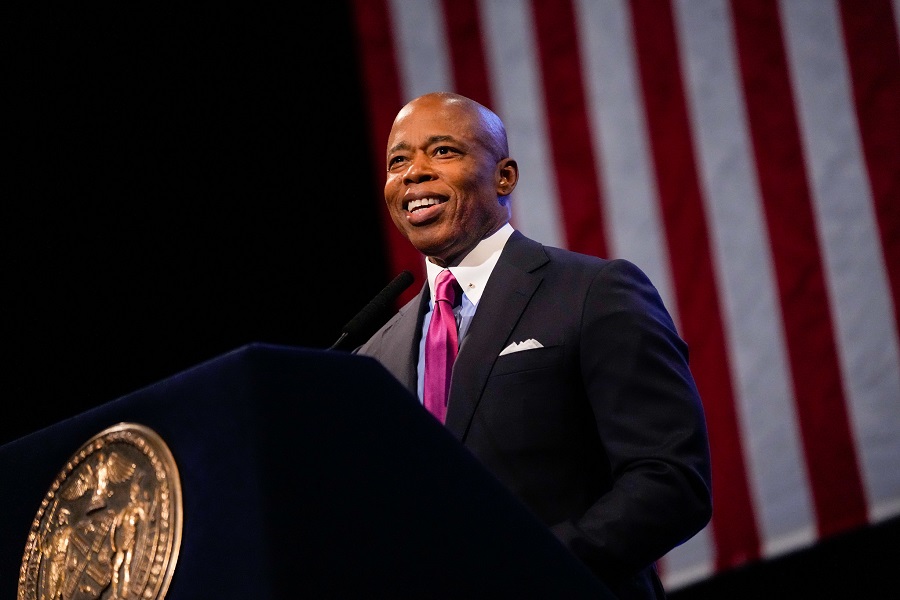 Wednesday night, Harlem road diet supporters and opponents met in an attempt to find common ground on what can be done to improve safety on Morningside Avenue. The move comes in advance of DOT releasing a second plan for the street, after its first design encountered opposition from Community Board 10.
Wednesday night, Harlem road diet supporters and opponents met in an attempt to find common ground on what can be done to improve safety on Morningside Avenue. The move comes in advance of DOT releasing a second plan for the street, after its first design encountered opposition from Community Board 10.
CB 10′s chair is worried that reducing car lanes to add pedestrian islands to Morningside Avenue will create problems with double-parked drivers.
The plan to calm traffic on Morningside Avenue [PDF], requested by North Star Neighborhood Association and supported by CB 9, has been waiting for action from neighboring CB 10 since it was released last September. But key CB 10 members object to its central component — a reduction in the number of car lanes to create space for a painted median and pedestrian refuge islands — and the board has refused to take action on the plan. In response, DOT went back to the drawing board and is creating a second plan to be presented in the coming weeks.
About 25 people attended the Wednesday meeting, which was hosted by North Star and included presentations from CB 10 chair Henrietta Lyle and Transportation Alternatives Manhattan organizer Tom DeVito, who talked about how the plan fits into Mayor de Blasio’s Vision Zero program.
The event featured plenty of crosstalk and heated exchanges, but there was also discussion of the need for a plan that everyone in the room could support. While the meeting ended on a positive note, the path to agreement remains murky: Lyle and many CB 10 members remain opposed to reducing the number of car lanes, and DOT has not yet released its alternative plan.
“I just don’t think it’s a good community position for us to be battling when safety is the number one thing,” said Aissatou Bey-Grecia, a founding member of North Star. The group focused on Morningside Avenue after an unsuccessful bid for a 20 mph Slow Zone in the neighborhood yielded discussions with DOT about the street. “Any change would be a good change, as far as I’m concerned, on Morningside Avenue. But what happens should come out of the collective voice.”
For her part, Lyle alternated between support of unspecified traffic safety improvements and telling the group that there was no pressing reason to implement a road diet on Morningside. Lyle held up a printed Google Map of traffic speeds to show that because Morningside Avenue was not colored in red, yellow or green, it did not require any changes. ”They had nothing on Morningside Avenue, meaning it is okay,” she said.
Lyle also said that the board supports traffic calming, but has problems with the central components of those plans. “Community Board 10 supports all the safety improvements that have happened in our community,” she said. But road diets have created problems, primarily with navigating around double-parked drivers, she claimed: “On Adam Clayton Powell and Mount Morris Park West, when they reduced lanes, other problems were created.”
Lyle said that she wanted to make sure CB 10 was doing its due diligence, to make sure that a lane reduction on Morningside Avenue wouldn’t result in similar problems. “We do support all of the changes, with the exception of reducing the lanes,” she said. “We felt it didn’t work in two other places, so we were concerned that it wouldn’t work there.”
“I don’t want people to think Community Board 10 is holding this up,” Lyle said, adding that it was DOT, not CB 10, that was slowing up the process. “They’re not looking at this as a big problem with safety, I want you to know that.”
“My conversations with DOT sound like they’re very different than your conversations,” said Jonathon Kahn, a North Star steering committee member. There were 102 injuries on Morningside from 2007 to 2011, including four serious pedestrian injuries and one serious cyclist injury, according to DOT.
Lyle told Streetsblog after the meeting that she expects DOT will come back to present an alternative plan at next month’s transportation committee meeting, scheduled for April 10. (New board members begin their terms on April 1.) Lyle added that if DOT sees a problem with street safety, it should move ahead, even without the community board. “If DOT or anyone sees a need to do something, do it. We are just basically advisory,” she said. “If they see the need — that people are getting hit, do it. Just do it.”
Despite her exhortation, DOT is unlikely to proceed on Morningside Avenue without a seal of approval from Lyle’s CB 10, which remains opposed to road diets. “Consensus is a tricky thing,” Kahn said. “It’s going to mean compromise” source.

Become a Harlem Insider!
By submitting this form, you are consenting to receive marketing emails from: . You can revoke your consent to receive emails at any time by using the SafeUnsubscribe® link, found at the bottom of every email. Emails are serviced by Constant Contact


















